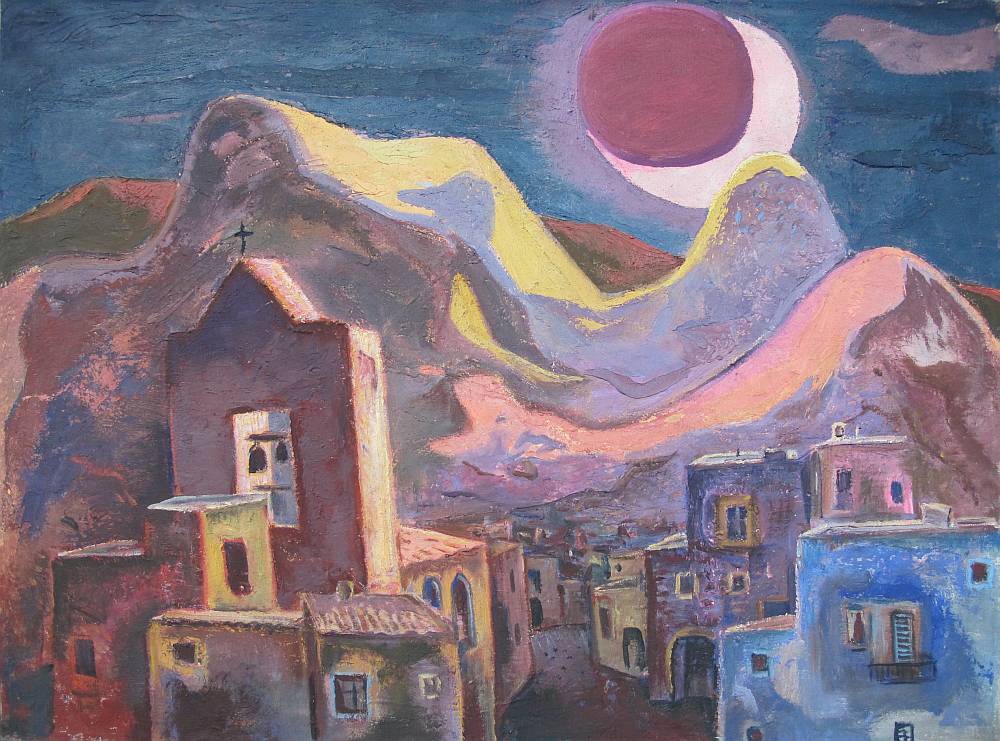|
"Willi Geiger and Rupprecht Geiger: Journey to the South", Künstlerhaus Geiger - die Bax, Übersee am Chiemsee July-September 2016. After the fourth exhibition with an overview of the five artistic positions of the Geiger family of artists, the current presentation is dedicated to the wanderlust of Willi Geiger and his son Rupprecht to the south. While the themes of still life and bullfighting are played out in Willi's home, numerous landscapes and city views by the two artists in the Tenne invite visitors on an exciting journey of discovery. Willi Geiger's many trips to the Mediterranean begin as early as 1905, when he wins the Graf Schack Prize, awarded for his portfolio Liebe. Various countries are explored, from Italy to Tunisia, from France to the Iberian Peninsula. Five years later he is awarded the Villa Romana Prize, which leads to a year-long stay in Florence. During this time and in the years that followed, he recorded the motifs he saw on paper or canvas, his color palette brightening a bit under the influence of the intense Mediterranean light. Decisive for his artistic development is the daring new beginning in 1923 in Spain and the encounter with the work of El Greco. With his son Rupprecht, Willi traveled through the Spanish interior and was particularly influenced by the city of Toledo, as two city views in the exhibition attest. There he made many studies of El Greco's expressionistic human scenes and Willi copied the Burial of the Count of Orgaz. His enthusiasm for that painting appears in a reflection written down on the spot: "In front of this extraordinary work, the magic of color opens elementally to the mind's eye." This magic is also reflected in the exhibited portraits of the matadors, whose faces are illuminated by a southern light. As the many - but only partially exhibited - works show, Willi was fascinated throughout his life by the now controversial subject of bullfighting. During the two-year stay in Spain, the journey continues to the Canary Islands and Morocco. The experiences from the Spanish intermezzo not only shaped the father into old age, but also his son. Along the way, Willi teaches the young Rupprecht the craft of art. He also keeps a diary and sketches detailed pencil drawings as well as colorful cityscapes and landscapes, which already foreshadow his career as a recognized painter. His travels with his father in the South awakened his lifelong fascination with light and color, and certainly encouraged his turn to painting during World War II. As a war painter (at the instigation of his father's efforts), Rupprecht was deployed to Greece in 1944, among other places, where he continued his self-taught studies in painting. He produced a large number of colorful landscapes, still lifes, cityscapes - all pictorial testimonies to the experience of color, which he describes as follows: "The South is a single intoxication, a symphony of colors and one faces it oh! all too often stunned. Often I walk perplexed and almost in despair through the glow of the houses - alleys and light and shadow appear with crushing abundance, also the danger of the too colorful lurks. 'The street of the fort' under noon: green sea, ultramarine blue house, pale green house and the sky Prussian blue. That's too much." Even at this early stage, Rupprecht places color at the center of his artistic work. Admittedly, he finds his way to abstraction within a very short time in the first post-war years. Nevertheless, on numerous trips to the Mediterranean, among other places, he created representational, color-intensive landscapes and city views that captured the essence of the places - light and color. |
5. Exhibition 2016


